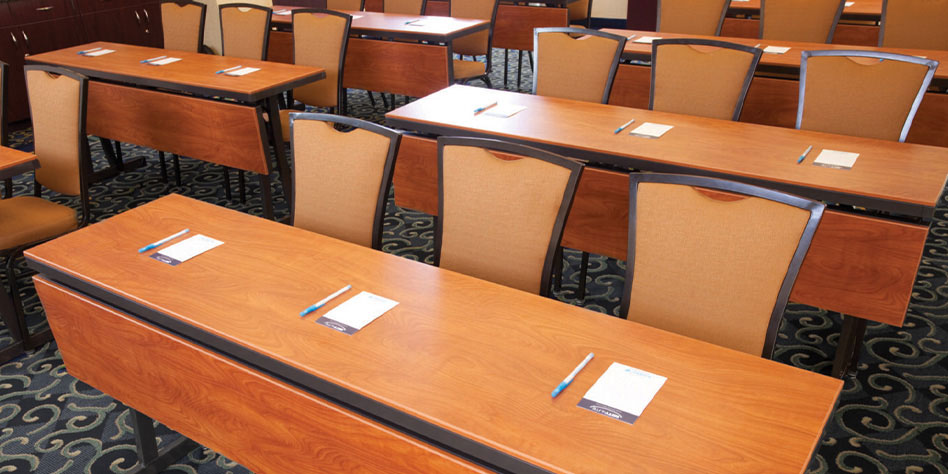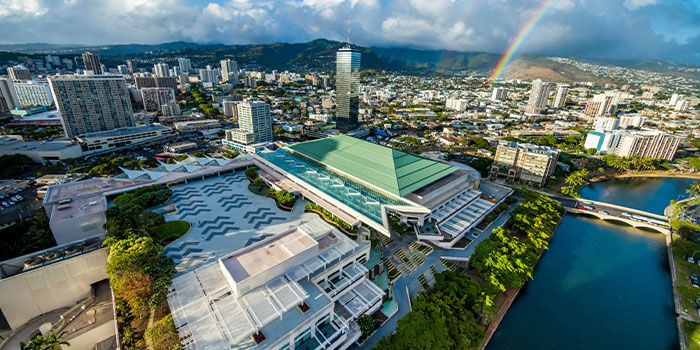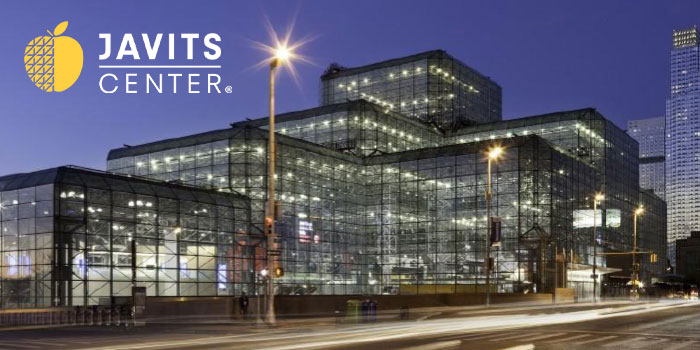
How to Choose a Folding Table
“Quality” is often cited by customers as the most important factor when choosing their table supplier and typically encompasses durability, lightweight, ease of handling, and ease of maintenance. Of late, many customers stress that purchasing tables are capital decisions so the motivation is ROI. “We want to buy products that will last a long time and whose manufacturers are accountable and will be there if there is a problem or a need to replicate or replace,” states a hospitality purchaser of MityLite tables and chairs.
As such, it is important to understand that many advances in materials and manufacturing processes have increased a customer’s folding table purchasing options. Among the varied tables lines available today are: plywood, laminate, plastic, and aluminum. The customer’s overall experience and cost of ownership have much to do with the type of folding table they select.
Types of Folding Tables
Particleboard: These kinds of tables have been available since the mid-1900s. Particleboard melamine tables are the lowest-cost option out there. However, you get what you pay for. Particleboard tables are very heavy and breakable, and they don’t support much weight.
Plywood: Plywood tables are often found in the hotel banquet world and are typically on the heavier end of the table spectrum. They’re rigid and able to take some punishment, but because they’re wood they are susceptible to cracking, warping and splintering. These shortcomings create handling and liability concerns, which have been addressed in recent years by leading manufacturers through high-end acrylic finishes, aluminum runners, and polymer edge designs.
High-pressure laminate: These tables use laminate sheets like those found on kitchen countertops, adhered to a plywood or engineered wood subsurface. High-pressure laminate tables have all the rigidity and strength of plywood, along with additional durability and customization options. These tables resist stains, are less likely to crack or splinter, withstand heat or liquid damage from food service, and are easy to clean.
Plastic: Plastic comes in two varieties. The first is blow-molded polyethylene, which was developed for the residential market. These are cheaply priced, have a slightly textured surface and are easy to clean. However, blow-molded tables do not have an internal frame structure and can bow and fatigue over time. Blow-molded polyethylene is also more susceptible to damage from heat, so be careful putting hot dishes right on top of a blow-molded table.
A superior style of plastic table for commercial use is the thermoformed ABS table. Leading ABS table manufacturers utilize an interior wooden frame with ABS plastic sheets vacuum-formed around it. This construction method adds strength, durability and the ability to bear higher loads. The surface of an ABS plastic table is generally considered superior to the blow-molded table due to its hardness, gloss and toughness. The best ABS tables can support over 1 ton of weight. They also come with longer warranties (12 to 15 years) and posses a thin wood laminate subsurface that provide moderate heat shielding to keep the table surface smooth and flat even when used with food service chafing dishes and warming pans.
Aluminum: Among the newer entrants to the market, aluminum tales are some of the lightest and strongest tables out there. Of course, that combination means they’re also among the most expensive. Because they are metal, aluminum tables are susceptible to scratching, so care must be taken in use and handling. Like leading ABS and laminate-topped tables, aluminum tables are typically maintenance free, but can also be used outdoors. Look for aluminum tables constructed from a seamless sheet of aluminum for easier cleaning and as a more sanitary option for food service or banquet areas. Though their cost is high, aluminum tables can last for 10 to 15 plus years depending on use.
Aluminum plus high-pressure laminate: Representing the best of both worlds, aluminum framed tables with high-pressure decorative laminate tops capitalize on the strength and durability of an aluminum frame and leg system while offering a less industrial look and completely customizable table surface. A true “Linen-less Table,” this design is also on the upper-end of the pricing spectrum, but can last 10 plus years and can save facilities thousands of dollars in operating costs related to linen laundering, labor, and replacement costs. Linenless tables add a level of refinement and sophistication previously unachievable in banquet, meeting, and event venues.


